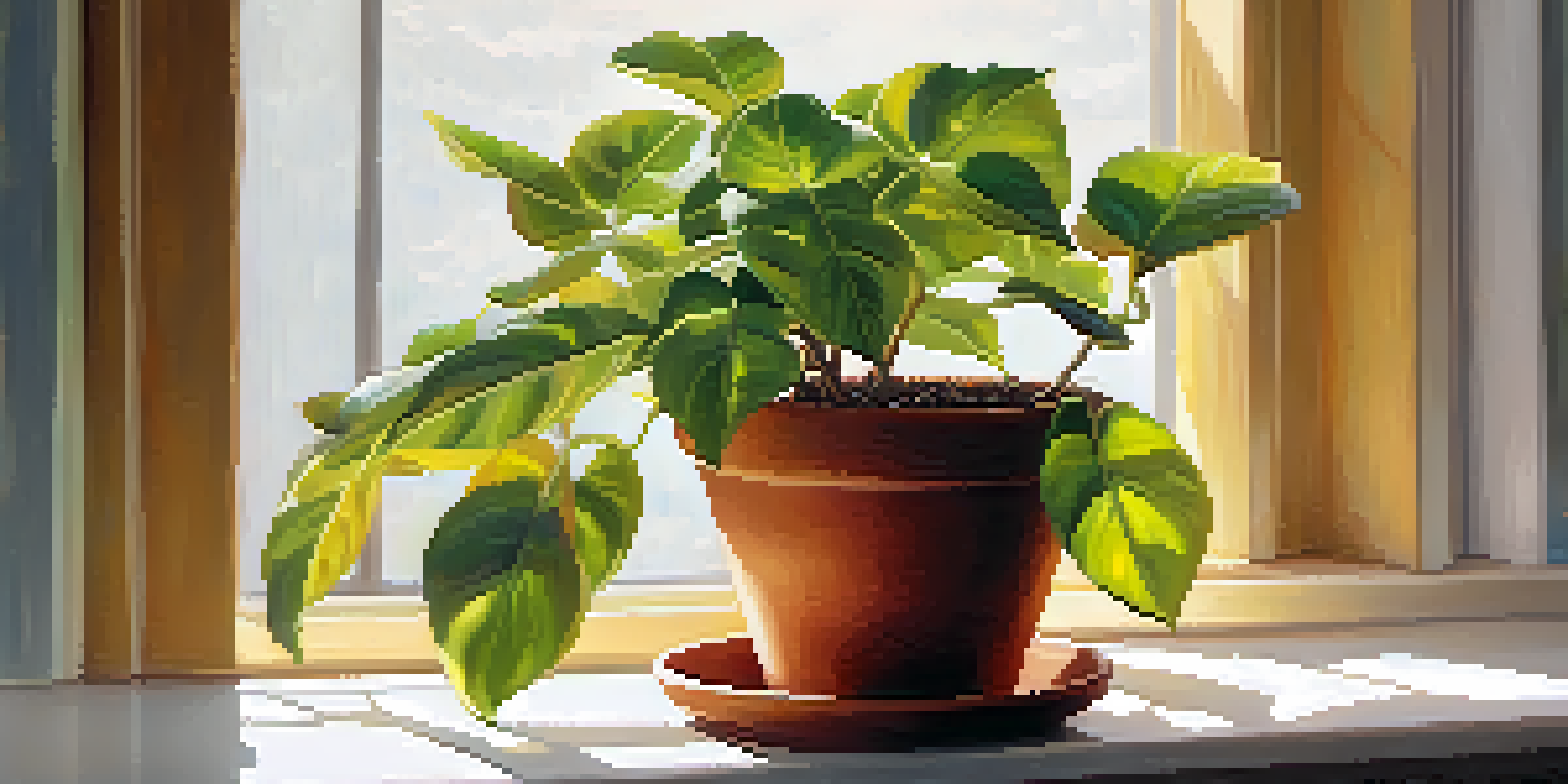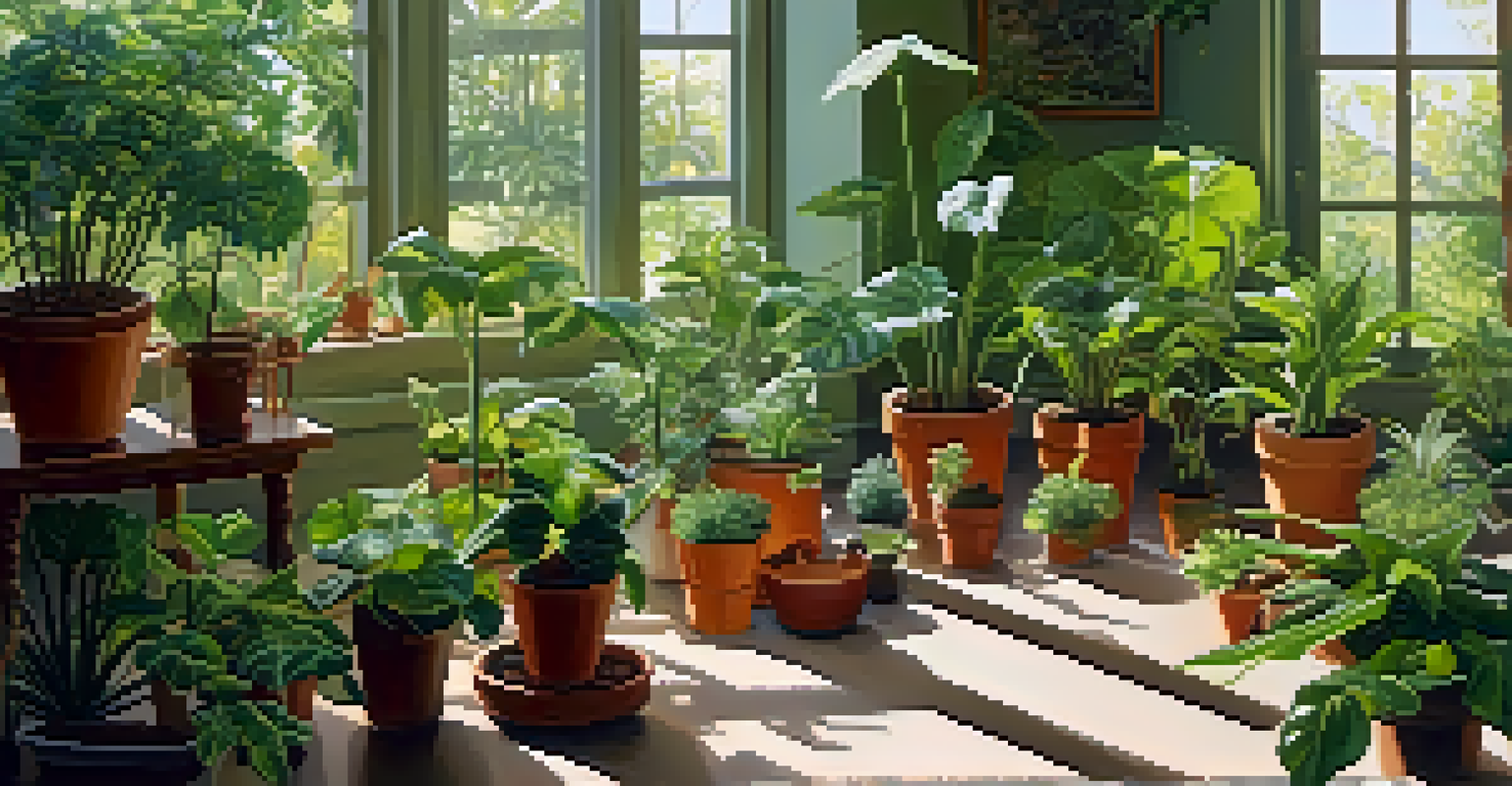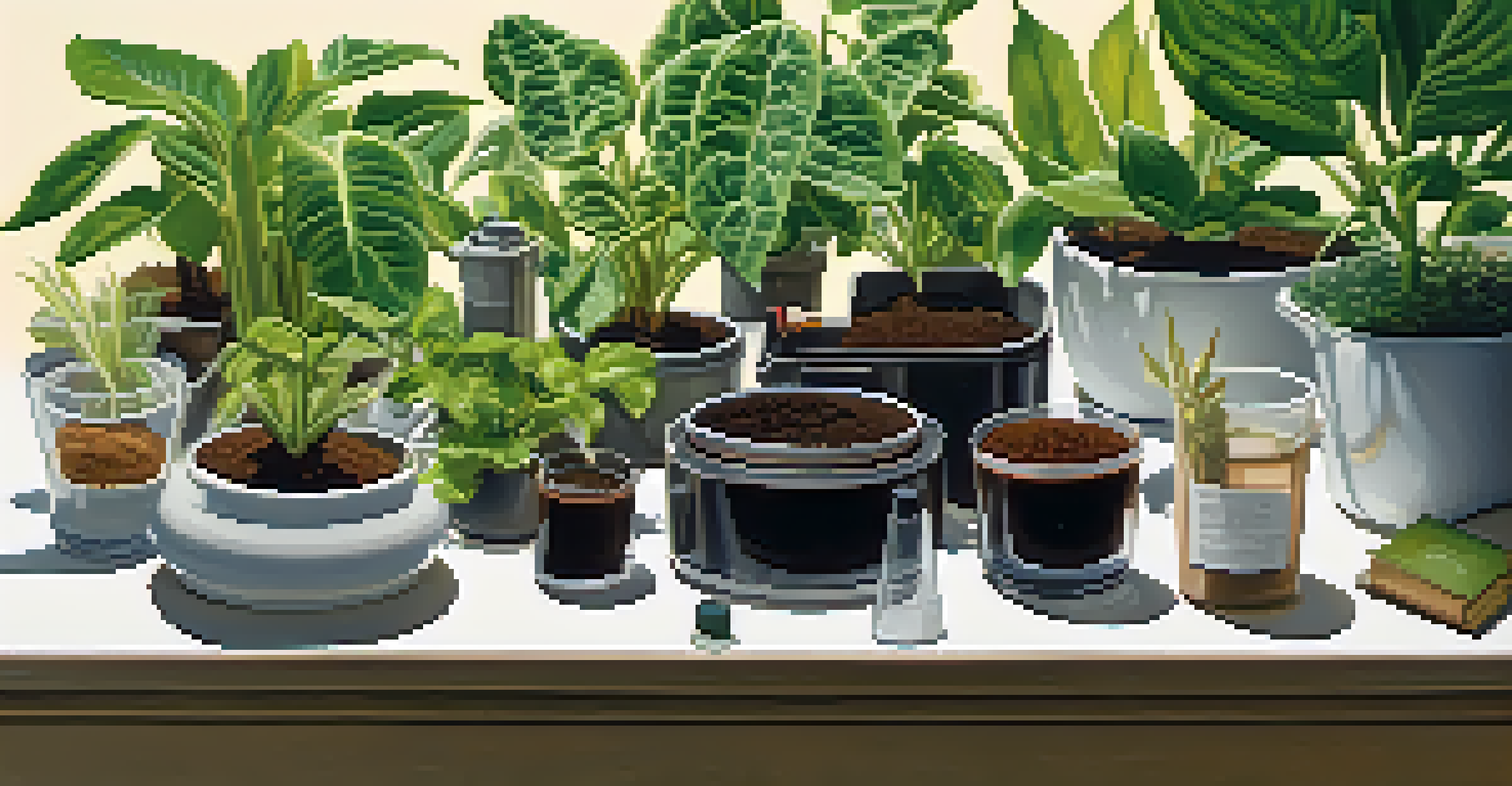Dealing with Leaf Yellowing: Causes and Remedies for Plants

What Causes Leaf Yellowing in Plants?
Leaf yellowing is a common issue that many plant lovers encounter. It can signify various problems, from nutrient deficiencies to environmental stress. Understanding the underlying causes is essential to address the issue effectively.
Plants are like people; they need proper nutrition to thrive.
One of the most frequent culprits is nitrogen deficiency, which can lead to older leaves turning yellow as the plant redirects nutrients to newer growth. Other factors include overwatering, which can suffocate roots and cause yellowing, and pest infestations that rob plants of vital nutrients.
By identifying the specific reasons behind leaf yellowing, you can take targeted action to restore your plant’s health, ensuring it thrives in your care.
Recognizing Nutrient Deficiencies in Your Plants
Nutrient deficiencies are a primary reason for leaf yellowing, and recognizing them can be a game-changer. For instance, a lack of nitrogen often results in yellowing leaves, particularly older ones, while iron deficiency causes yellowing between the veins of new leaves.

To diagnose nutrient deficiencies, observe your plant closely and consider using a soil test kit. This will help you determine which nutrients are lacking and need replenishment.
Leaf Yellowing Causes Explained
Leaf yellowing can result from nutrient deficiencies, overwatering, pests, or environmental stressors.
Once you pinpoint the deficiency, you can amend the soil with appropriate fertilizers, such as a balanced fertilizer for nitrogen or an iron supplement for iron deficiency.
The Impact of Watering Practices on Leaf Health
Watering practices play a crucial role in maintaining healthy leaves. Overwatering can lead to root rot, which prevents roots from absorbing nutrients, resulting in yellowing leaves. Conversely, underwatering can stress a plant, leading to similar symptoms.
The best way to care for a plant is to know what it needs before it shows signs of distress.
To find the right balance, always check the moisture level of the soil before watering. A simple finger test can help; if the top inch of soil feels dry, it’s time to water.
Adjusting your watering routine according to your plant's specific needs can greatly improve leaf health and prevent yellowing.
Environmental Factors Leading to Yellow Leaves
Environmental stressors can also cause leaf yellowing. Factors like inadequate light, extreme temperatures, or sudden drafts can shock plants, leading to discoloration. For instance, low light levels can cause leaves to stretch and turn yellow as the plant struggles to photosynthesize.
To mitigate these issues, ensure your plants are placed in suitable locations with adequate light. If temperatures fluctuate significantly, consider moving them to a more stable environment.
Identifying Nutrient Deficiencies
Recognizing specific nutrient deficiencies, like nitrogen or iron, is crucial for restoring plant health.
By creating an optimal environment, you can help your plants flourish and reduce the risk of yellowing leaves.
How Pests and Diseases Contribute to Yellowing Leaves
Pests and diseases are often overlooked causes of leaf yellowing. Insects like aphids or spider mites can damage leaves and sap essential nutrients, leading to discoloration. Additionally, fungal infections can cause leaves to yellow and drop prematurely.
Regularly inspecting your plants can help catch pest infestations early. Look for signs such as webbing, sticky residue, or tiny insects on the leaves.
If you identify pests, treatment options include insecticidal soap or neem oil, while fungal issues may require a fungicide to restore health.
Effective Remedies to Restore Leaf Color
Once you’ve identified the cause of leaf yellowing, it's time to implement remedies. For nutrient deficiencies, use a slow-release fertilizer or compost to replenish essential nutrients in the soil. This can significantly improve leaf color and overall plant health.
Adjusting watering habits, ensuring proper drainage, and providing adequate light are also effective strategies. Regularly monitor your plants and make necessary adjustments as they grow.
Preventing Yellow Leaves Effectively
Implementing best practices such as proper plant selection and regular monitoring can help prevent leaf yellowing.
With consistent care and attention, you can turn those yellowing leaves back to vibrant green, reflecting a healthy and thriving plant.
Preventing Leaf Yellowing: Best Practices
Preventing leaf yellowing is often easier than treating it. Start by choosing the right plant for your environment to ensure it thrives in its designated space. Research specific care requirements, including light, water, and soil preferences.
Regularly monitoring your plants for signs of stress can help catch issues before they escalate into yellowing leaves. Establish a routine for watering, fertilizing, and inspecting for pests.

By implementing these best practices, you can enjoy lush, green foliage and minimize the chances of leaf yellowing in the future.